STARTING POINT
When Mussolini rose to power, he banned all the other political parties, and this included the communist party.
The Italian Communist Party was founded in 1921 in Livorno following the secession of some members from the Italian Socialist Party. It had 2 main bodies within: “Ordine nuovo”, led by Antonio Gramsci, and the Maximalist faction led by Nicola Bombacci. It was officially founded as the “Communist Party of Italy-Section of the Communist International”.
In the general election of that year, they obtained 4.6% of the vote and 15 seats in the Chamber of Deputies. Since they were a territorial part of the Comintern, the PCI decided to adopt the same program and the same tactics used in Moscow.
It was a reproduction of what Lenin wrote for the Bolsheviks.
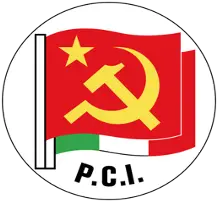
THE RED BIENNIUM
The Red Biennium was a 2 year period, between 1919 and 1920 where Italy was on the verge of a civil war, but it all got stopped by Mussolini and his Blackshirts. It took place in a context of economic and social crises following the end of WW1.
It was characterized by mass strikes, manifestations and protests done by factory workers. Fear was growing of a possible communist takeover of power, like what happened in Russia 2 years before. Those that participated in those strikes called themselves the “Red Guards”.
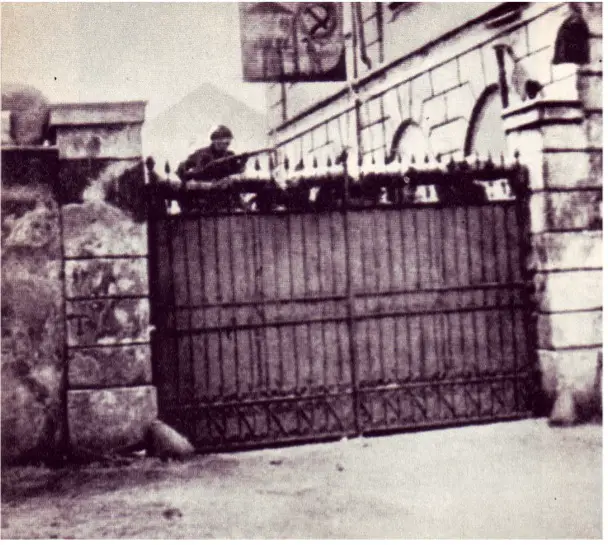
An armed worker stands guard in front of the entrance of a factory
DISTINCTION FROM THE RUSSIAN COMMUNIST PARTY
While the soviets used the term: “Dictatorship of the Proletariat”, Gramsci preferred to use “Hegemony of the working class”, demonstrating how his approach was much more peaceful, non violent and gradual, as to bring the working class together to power.
CLANDESTINE OPERATIONS
When Fascism rose to power, all the political parties that differed from their point of view had to hide or operate in secret, as to not alert the fascist authorities.
As such, they had to held their annual conference in secret.
Unfortunately for them, most of their leaders, such as Gramsci and Bordiga, where arrested and put on “confino” (segregated on an island with no access to news nor letters) and this meant that they lacked leadership for a while.
THE SPANISH CIVIL WAR
When the Spanish civil war broke out in 1936, a multitude of volunteers started joining both the Franchists and the Republican ranks, and even some Italian communists saw actions. They joined the cause of the Republicans hoping to form a Socialist republic in Spain, and they were backed by the Soviet Union.
Unfortunately things started to go down and almost all of the volunteers had to retreat or disappear to avoid capture by the fascists, and the Republican side quickly fell.
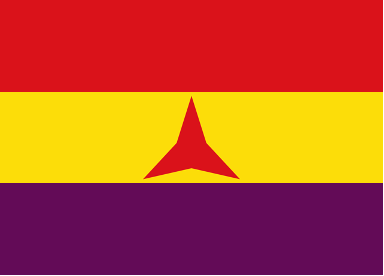
Flag of the International Brigades during the Spanish civil war
WORLD WAR II AND THE RESISTANCE
When Italy joined the fight during the 2nd World War, communists were already seen organizing strikes and protests against the fascist rule and the war, but those were quickly stopped by fascist authorities. Protests were not held until 1943, when the fascist rule over Italy started to fade away. When Mussolini fell on the 25th of July 1943, Partisans formations quickly took advantage of this and started to free territories from the Fascist’s gasp.
Mostly these formations were composed of ex Royal Italian Army soldiers, but the communists quickly began distinguishing themselves and started calling their brigades as the “Garibaldi Brigades”.
GARIBALDI BRIGADES
They were partisan units that fought during the 2nd World War; they were mostly composed by communists, members of the National Liberation Committee and the Italian Socialist Party.
Members of this brigades wore a red handkerchief around their neck decorated with stars
They were formed on the 20th of October 1943, when the Communist party created their own military committee. The commanding officers were Pietro Secchia and Luigi Longo.
When Badoglio declared war on the Germans, the General command issued a document, called “The attack directives”, where they explained how to operate and what to do. Secchia later wrote an article about their objectives and claimed the importance of swift military actions that were needed to “Shorten the war and the German occupation” in order to save villages and people.
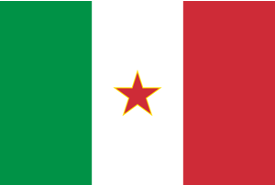
Flag of the “Brigate Garibaldi”
Organization
They chose to call themselves brigades in reference to the International Brigades from the Spanish Civil War and their ranks were composed of an inhomogeneous mixture of origins, in fact they had both civilians and ex Royal Italian Army soldiers, communists and ex fascists and commoners.
The fact that these brigades were formed by such a diversity of backgrounds proved to be a problem in the future, in fact some fights broke out between members because of their political beliefs, but all in all they managed to stick together and fight.
Others
The Garibaldi was not the only active communist partisan organization, in fact there were several others, but they were not as famous as them. Those bands often worked alongside the GAP (Groups of Patriotic action) and the NCL (National Committee for Liberation).
Their common objective was to sabotage nazi-fascists actions and armored assault on their patrols.
Insurrection and end of the war
On the 10th of April 1945, the General command of the Brigade Garibaldi issued the “Directive no. 16”, which warned all the combatants to arm themselves and enter northern Italy to help the upcoming Allies and cooperate for the final push against Nazi-fascists forces.
In the document it was also noted that the insurrection had to be done without agreements with the foes and without truces.
A common ground was established between forces as to not attack cities and factories.
It all started on the 24th and 25th of April (In Italy this day is remembered as Liberation day).
Mussolini himself was captured by the 52° Brigata Garibaldi “Luigi Clerici” and subsequently killed in Dongo. At the end of the war, many feared of an upcoming civil war between the communist and the capitalist part of the Italian society, but fortunately nothing happened.
THE NATIONAL LIBERATION COMMITTEE
It was formed on the eve of the German invasion of Italy and its members were primarly from the Italian Communist party, the Italian Socialist party, the Action party and the Christian democracy. They were backed by the Royal Government and the Allies and even gained recognition as the representative of the Italian Resistance movement. They had 3 main divisions: the communist “Garibaldi”, the Action’s “Justice and Freedom” and the Socialist “Matteotti”.
They led the Italian government from 1944 till 1946 when the 1st post war election happened.

Flag of the “Comitato di Liberazione Nazionale”
THE “GRUPPI DI AZIONE PATRIOTTICA”
The GPA (Group of patriotic action) were formed by the general committee of the Garibaldi Brigades at the end of October 1943, on the false line of the French resistance. They are famous for the Via Rasella Attack, that killed 33 German soldiers.
FAMOUS MEMBERS OF THE ITALIAN COMMUNIST PARTY
Antonio Gramsci
Antonio Francesco Gramsci was an Italian Marxist philosopher, journalist, writer and politician. He was a founding member and a leader of the Italian Communist Party. He often criticized Benito Mussolini and his fascist party, and for this he was arrested and imprisoned in 1926 until his death in 1937.

Antonio Gramsci
Palmiro Togliatti
Palrmiro Michele Nicola Togliatti was a politician and the Leader of the PCI from 1927 until his death in 1964. He even served as a member of the Comintern from 1934 till 1938. Togliatti went in exile in the Soviet Union during ww2, trying to seek help for the Italian Communist cause and later returned in Italy to help rebuild the country after the war.

Palmiro Togliatti
Luigi Longo
Luigi Longo, also known as “Gallo”, was a communist politician and also general secretary of the Italian Communist Party from 1964 to 1972. He first fought during the Spanish civil war with the Republican troops and the International Brigades. Following the defeat of the Republican side, he returned to France but was later arrested by Vichy troops. After Mussolini’s fall he took command of the “Brigate Garibaldi”. He was in Dongo when Benito Mussolini and his Mistress Claretta Petacci were executed.
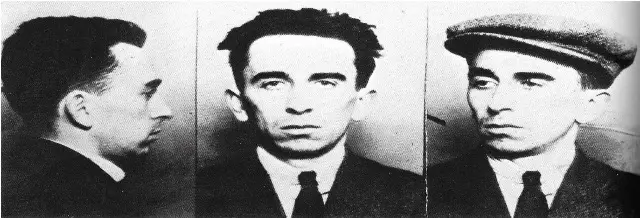
Luigi Longo
Giancarlo Pajetta
Giancarlo Pajetta was a communist politician who took part in the assembly of the Partisan Resistance and the Garibaldi Brigades, becoming their de facto deputy commander. He was part of a delegation from the CLN that hoped to gain recognition from the Allies as the legitimate government of Italy.

Giancarlo Pajetta
CONCLUSION
Italy in the first half of the 20th century was under a fascist dictatorship, and many attempts were made at throwing it down and trying to establish a legit government. It finally happened in 1943, and many thought that the new government was going to be a communist one, but that never happened. In fact, Italian communists wanted the power, but they knew that a revolution in Italy in the style of the Soviet one, was impossible.
All they could do was try and give Italy as many things as possible that were a reminiscent of communism: when they wrote the new Constitution, it says: “Italy is a democratic Republic, founded on work. Sovereignty belongs to the people, who exercise it in the forms within the limits of the Constitution”.
To wrap things up, we can say that Italy, for the 1st part of the 2nd world war was not communist country. When Mussolini’s government fell, fears arose about the possibility of a communist takeover, but the presence of the Allies and the fact that the Italian Monarchy was still in the country and many believed in it, made all efforts in vain.